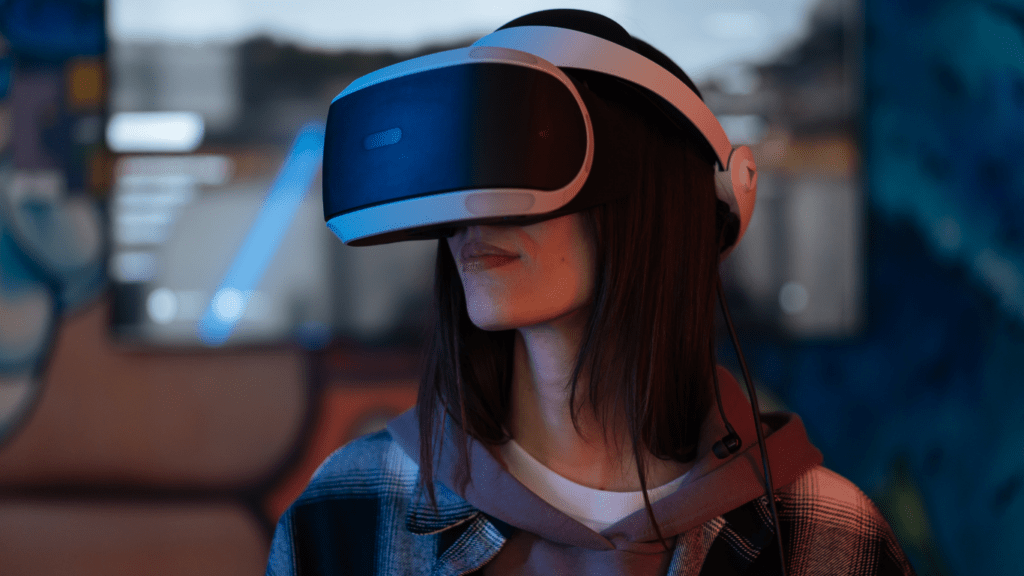As I dive into the world of virtual reality gaming, I can’t help but marvel at the rapid advancements shaping our experiences. By 2025, VR gaming promises to redefine how we interact with digital worlds, offering immersive experiences that feel more real than ever.
With cutting-edge devices on the horizon, gamers will soon find themselves fully engaged in breathtaking environments, blurring the lines between reality and fantasy. In this article, I’ll explore the latest VR devices set to hit the market and the innovative technologies driving these transformations.
From improved graphics to enhanced motion tracking, the future of gaming is bright and exhilarating. Get ready to discover how these advancements will elevate our gaming experiences to unprecedented heights.
Overview of VR Gaming Trends
VR gaming trends in 2025 focus on enhancing immersion and interaction. Advancements in graphics technology lead to hyper-realistic visuals, making virtual environments more engaging. Next-generation headsets incorporate lightweight designs and improved field-of-view angles that create seamless experiences.
Increased emphasis on social interaction emerges as VR gaming evolves. Platforms now allow players to connect with friends in virtual spaces, promoting real-time collaboration and competition. Enhanced multiplayer features enable more dynamic social gaming experiences.
Key Innovations in VR Hardware
Advancements in VR hardware are reshaping the gaming landscape for 2025, focusing on improved performance and user experience. The latest devices promise to deliver unprecedented levels of immersion and interactivity.
Standalone Headsets
Standalone headsets offer gamers a wireless experience without the need for external equipment. These devices feature enhanced processing power, thanks to advancements in system-on-chip (SoC) technology.
High-resolution displays, typically exceeding 4K, provide clearer visuals, reducing motion blur. Inside-out tracking technology enables precise motion detection without requiring external sensors. Battery life has seen significant improvements as well, with many headsets supporting up to several hours of continuous gameplay.
Notable examples include the Meta Quest 3 and the Pico 5, both designed to maximize comfort and usability for extended play sessions.
PC-Compatible Devices
PC-compatible VR devices take advantage of powerful gaming PCs to deliver an unmatched visual experience. These headsets commonly support resolutions up to 8K and refresh rates beyond 120Hz, providing smooth and realistic graphics. Improved graphics processing units (GPUs) in gaming rigs enhance the rendering of complex environments, making them more lifelike.
New innovations include advanced eye-tracking for foveated rendering, which optimizes performance by reducing the graphical load on non-focused areas of the display. Popular devices like the Valve Index and the HTC Vive Pro 2 exemplify the capabilities of PC-compatible headsets, emphasizing high fidelity and expansive field-of-view angles to enhance immersion.
Advancements in VR Software
VR software advancements significantly improve immersive experiences. Innovations in game development techniques and enhancements in graphics and performance create engaging worlds and seamless interactions for players.
Game Development Techniques
Game developers adopt advanced techniques to optimize virtual environments. Procedural generation, for instance, enables the creation of expansive worlds without redundancies. This method allows for unique landscapes and experiences tailored to player preferences.
Collaboration between developers is crucial. Cross-platform development tools streamline processes, facilitating unified experiences across devices. Additionally, agile methodologies help teams respond quickly to player feedback, ensuring continuous improvement.
Artificial intelligence plays a vital role. AI systems adapt gameplay to individual preferences, enhancing challenges and narratives. This customization keeps players engaged and increases retention rates.
Enhancements in Graphics and Performance
Graphics and performance enhancements reshape the VR landscape. Real-time ray tracing technology improves light simulation, resulting in hyper-realistic visuals. Players experience more lifelike environments, enhancing overall immersion.
High refresh rates are standard in new devices. Many VR headsets now support refresh rates of 120Hz or higher, ensuring smooth motion and reducing motion sickness. This improvement contributes to a more enjoyable gaming experience.
Optimized rendering techniques also elevate visual fidelity. Spatial audio integration enhances sound quality, aligning audio cues with visual elements, creating a more cohesive experience. Developers leverage these advancements to limit lag and enhance responsiveness, allowing players to interact naturally within their virtual environments.
Immersive Experiences in VR Gaming
2025 marks a significant leap in immersive experiences within VR gaming, offering innovations that redefine player engagement. These advancements focus on social interaction and the introduction of new genres and gameplay mechanics.
Social Interaction and Multiplayer Elements
Social interaction in VR gaming has evolved dramatically with platforms that enable real-time collaboration and competition. Players can engage in shared environments, interacting seamlessly with friends and strangers alike.
Features like voice chat, customizable avatars, and interactive spaces foster deeper connections among players. Games such as “VRChat” and “Rec Room” set benchmarks for social experiences, allowing players to build relationships in virtual settings. Integration of AI-driven NPCs in multiplayer settings enhances interactions by dynamically responding to player behaviors, enriching the overall gameplay experience.
New Genres and Gameplay Mechanics
New genres emerge, driven by advancements in VR technology, pushing traditional boundaries beyond classic gameplay styles. The introduction of simulation-based games allows for experiences that parallel real-world activities, such as flight training or complex engineering tasks.
Exploration games featuring massive, procedurally generated worlds provide players with endless adventures tailored to individual play styles. Innovative mechanics like hand-tracking, haptic feedback, and environmental interaction create a responsive gaming ecosystem. Titles like “No Man’s Sky VR” and “Boneworks” exemplify how these new genres and mechanics redefine what is possible in immersive gameplay, enabling players to connect with their virtual surroundings like never before.
Future Predictions for VR Gaming
As I assess the landscape of VR gaming for 2025, several key predictions emerge that highlight the direction of this technology.
- Device Advancement: Next-generation headsets will feature even lighter designs, enhanced field-of-view angles, and wireless capabilities, providing greater comfort and immersion. Devices like the anticipated Meta Quest 4 may exceed current 4K resolutions, enriching visual quality for gamers.
- Hyper-Realism: Graphics will reach unprecedented levels, employing advanced techniques like real-time ray tracing and AI-optimized rendering. These developments enable lifelike environments, capturing minute details that enhance player immersion.
- Social Dynamics: VR platforms will increasingly foster community connections, facilitating shared experiences. Features such as customizable avatars, robust voice chat, and virtual meetups will become standard, promoting collaboration and friendship in virtual spaces.
- AI Integration: Artificial intelligence will take an even more central role in gameplay. AI-driven NPCs will adapt to player behaviors, altering narratives and challenges dynamically, creating a tailored gameplay experience that enhances engagement.
- Expansion of Genres: The variety of VR game genres will grow, driven by innovative mechanics like hand-tracking and haptic feedback. Simulation games and exploration titles will become more prominent, offering expansive, procedurally generated worlds for players to explore and interact with deeply.
- Increased Accessibility: Greater attention will focus on inclusivity, with developers creating adaptive controllers and user-friendly interfaces. This push will expand the VR audience, ensuring that a broader range of players can enjoy immersive experiences.
- Cloud Gaming Impact: The rise of cloud gaming will make VR titles more accessible. Improved internet connectivity will reduce latency, allowing seamless play across devices. This trend will expand the library of available games, ensuring players can access a diverse array of content instantly.
These predictions underscore the transformative potential of VR gaming by 2025, promising a richer and more engaging experience for players.


 As a content specialist and tech-savvy gaming enthusiast, Christopher Elliotterio brings clarity and depth to Power Gamer Strategy Hub’s tutorials and player guides. His contributions focus on helping gamers master mechanics, optimize strategies, and explore new genres with confidence. Through his accessible and detailed writing, Christopher plays a key role in educating and empowering the gaming community.
As a content specialist and tech-savvy gaming enthusiast, Christopher Elliotterio brings clarity and depth to Power Gamer Strategy Hub’s tutorials and player guides. His contributions focus on helping gamers master mechanics, optimize strategies, and explore new genres with confidence. Through his accessible and detailed writing, Christopher plays a key role in educating and empowering the gaming community.